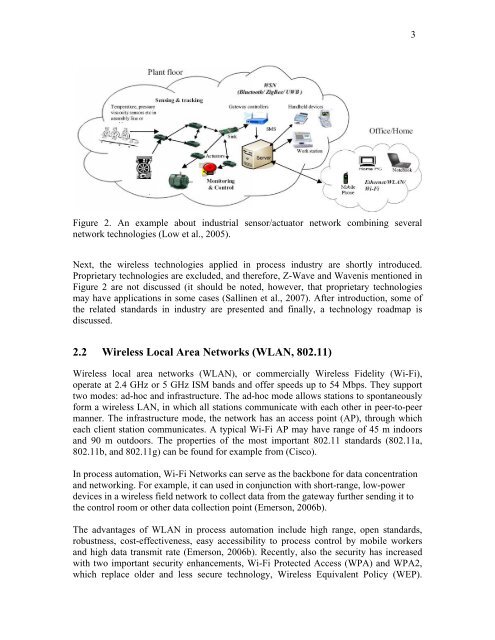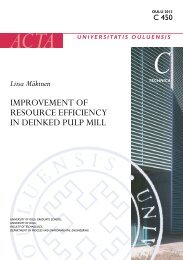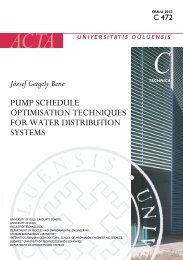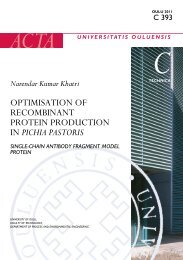Wireless Technologies in Process Automation - Herkules.oulu.fi - Oulu
Wireless Technologies in Process Automation - Herkules.oulu.fi - Oulu
Wireless Technologies in Process Automation - Herkules.oulu.fi - Oulu
Create successful ePaper yourself
Turn your PDF publications into a flip-book with our unique Google optimized e-Paper software.
3<br />
Figure 2. An example about <strong>in</strong>dustrial sensor/actuator network comb<strong>in</strong><strong>in</strong>g several<br />
network technologies (Low et al., 2005).<br />
Next, the wireless technologies applied <strong>in</strong> process <strong>in</strong>dustry are shortly <strong>in</strong>troduced.<br />
Proprietary technologies are excluded, and therefore, Z-Wave and Wavenis mentioned <strong>in</strong><br />
Figure 2 are not discussed (it should be noted, however, that proprietary technologies<br />
may have applications <strong>in</strong> some cases (Sall<strong>in</strong>en et al., 2007). After <strong>in</strong>troduction, some of<br />
the related standards <strong>in</strong> <strong>in</strong>dustry are presented and f<strong>in</strong>ally, a technology roadmap is<br />
discussed.<br />
2.2 <strong>Wireless</strong> Local Area Networks (WLAN, 802.11)<br />
<strong>Wireless</strong> local area networks (WLAN), or commercially <strong>Wireless</strong> Fidelity (Wi-Fi),<br />
operate at 2.4 GHz or 5 GHz ISM bands and offer speeds up to 54 Mbps. They support<br />
two modes: ad-hoc and <strong>in</strong>frastructure. The ad-hoc mode allows stations to spontaneously<br />
form a wireless LAN, <strong>in</strong> which all stations communicate with each other <strong>in</strong> peer-to-peer<br />
manner. The <strong>in</strong>frastructure mode, the network has an access po<strong>in</strong>t (AP), through which<br />
each client station communicates. A typical Wi-Fi AP may have range of 45 m <strong>in</strong>doors<br />
and 90 m outdoors. The properties of the most important 802.11 standards (802.11a,<br />
802.11b, and 802.11g) can be found for example from (Cisco).<br />
In process automation, Wi-Fi Networks can serve as the backbone for data concentration<br />
and network<strong>in</strong>g. For example, it can used <strong>in</strong> conjunction with short-range, low-power<br />
devices <strong>in</strong> a wireless <strong>fi</strong>eld network to collect data from the gateway further send<strong>in</strong>g it to<br />
the control room or other data collection po<strong>in</strong>t (Emerson, 2006b).<br />
The advantages of WLAN <strong>in</strong> process automation <strong>in</strong>clude high range, open standards,<br />
robustness, cost-effectiveness, easy accessibility to process control by mobile workers<br />
and high data transmit rate (Emerson, 2006b). Recently, also the security has <strong>in</strong>creased<br />
with two important security enhancements, Wi-Fi Protected Access (WPA) and WPA2,<br />
which replace older and less secure technology, <strong>Wireless</strong> Equivalent Policy (WEP).
















